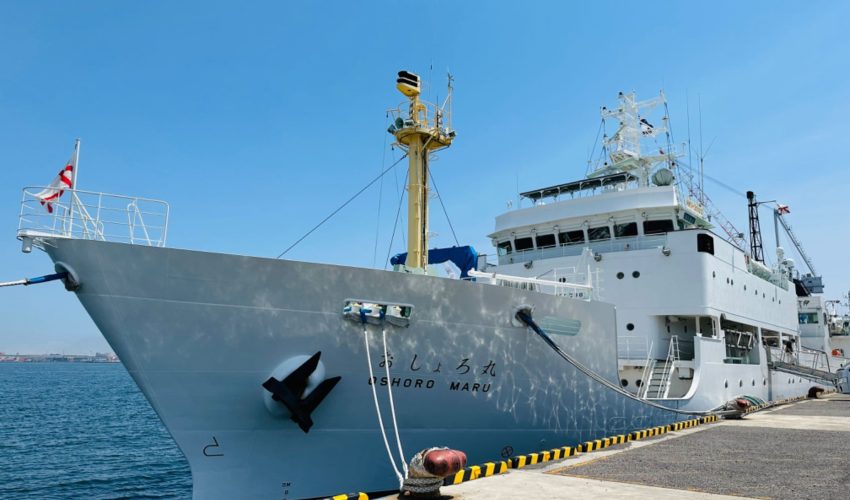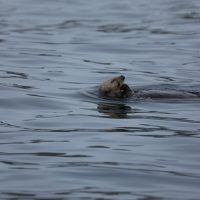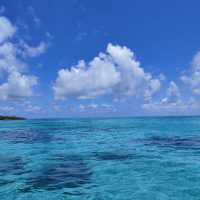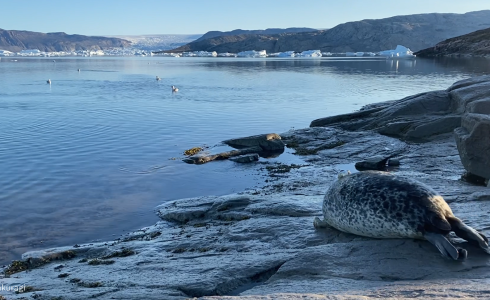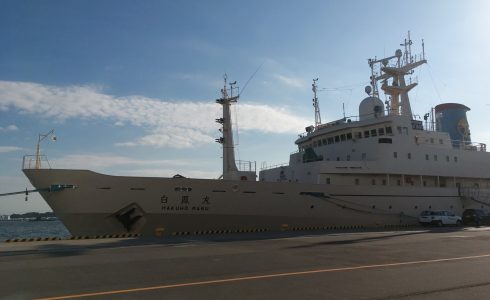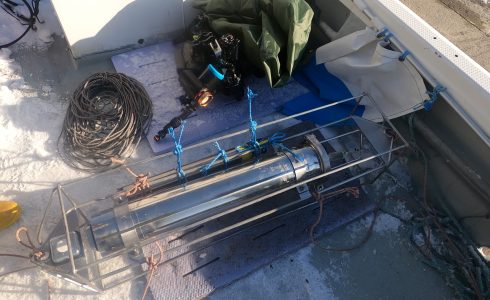8月にはブログ記事をもらっていたのに,放置してました・・・.D2のLさんによるおしょろ丸北極航海の報告です!
What the first word comes to you when you think about the Arctic? Is it related to the beautiful northern lights? The ice-covered landscape? Or the typic wildlife such as the polar bear, Bowhead whale?
From 8th June to 1st Aug, the Ocean Mammal Team conducted a 55-day sighting survey of marine mammals from the T/S Oshoro-Maru and sighted various marine mammals throughout the field trip! The entire voyage covered the North Pacific Ocean, the Bering Sea, and the Chukchi Sea. In the meanwhile, it involved diverse types of oceanographic and biological observations, which were mainly conducted by the Fishery Science Faculty of Hokkaido University. Our team aims to monitor the distribution of different marine mammal species and further explore the effects of climate change on circumpolar marine mammals. Similar with previous sighting survey, experienced observers using the binocular and search for any potential signs of marine mammals and identify the species once sighted. It is also necessary to count the group size and record their behaviors if possible.
The first marine mammals we sighted were one of our old friends, the Pacific whited-sided dolphins! Their typical curved dorsal fin and color pattern are very characteristic. We were also lucky to sight a “Brownell-type” anomalous-colored Pacific white-sided dolphin in the “normal-colored” pattern group. Pacific white-sided dolphins are known to give birth from the late spring to the fall; thus, we also sighted some mother and calf pairs. Other than Pacific white-sided dolphins, I was very excited to sight some northern fur seals during the cruise.
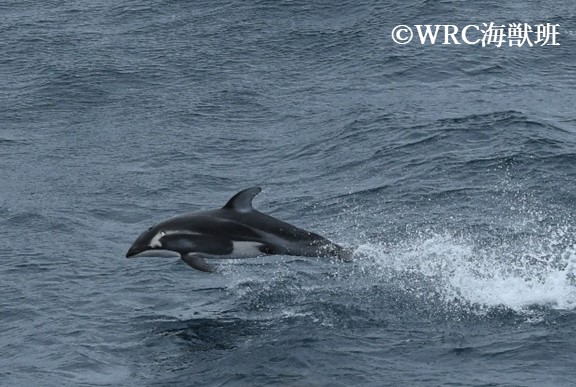 |
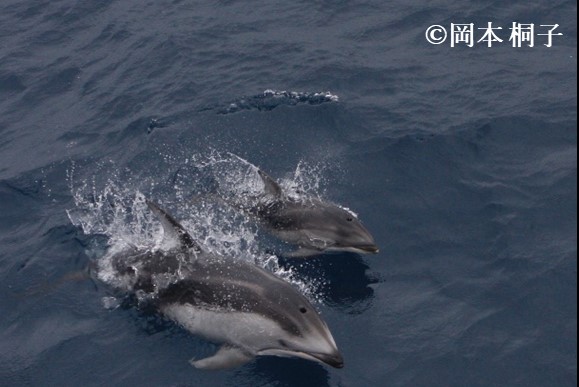 |
| Fig1. “Brownell-type” anomalous-colored Pacific white-sided dolphin. | Fig2. Mother and calf pair of Pacific white-sided dolphins. |
If you ask what other marine mammal species we would like to see, the North Pacific right whale will definitely be on the list. The unique heart-shaped exhale is so identifiable that it aids us to recognize them at the sea. Just as the meaning of right whales’ Japanese name (セミクジラ) the curve of their backs were really beautiful. It was fortunate to sight these rare baleen whales, and the records might contribute to monitoring their distribution and population dynamics.
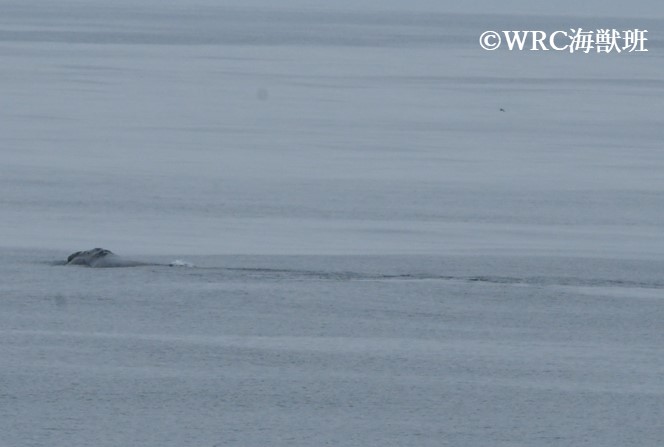
Fig3. North Pacific right whale with wart-like callosities on its head.
In the offshore areas, we sighted groups of common dolphins jumping out of the waters merrily. For Dall’s porpoises, we could recognize them by their unique black and white markings, but it was hard to take photos of those fast swimmers. Another species that was difficult to capture with the camera would be the harbor porpoise owing to their shyness.
Killer whales were one of the most popular species that most people expected to see during the voyage. Luckily, we sighted several groups of killer whales in various marine regions. Other baleen whale species, such as the fin whale, humpback whale, and minke whale were also sighted.
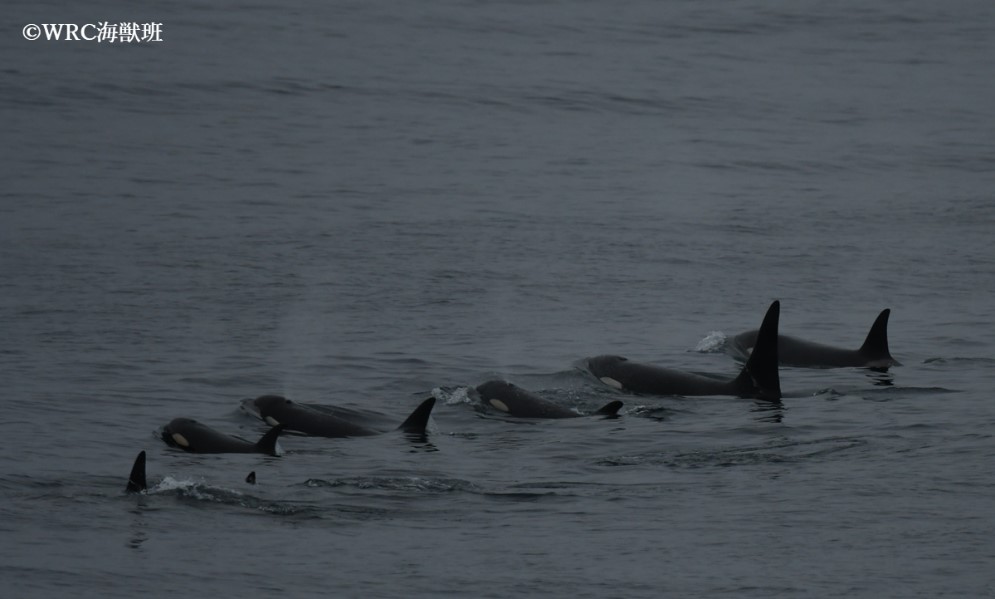
Fig4. A group of killer whales sighted during the Leg1.
The Leg1 of the voyage ended in the port of Nome. After a short break and food replenishment, our vessel headed toward the Arctic Ocean. The daytime period was extended as we approached the Arctic region. Eventually, the sun remained above the horizon over 24 hours, and we were in the polar day. It was noticeable that the occurrences of marine mammal species were changing spatially. We sighted numerous blows of gray whales and some humpback whales. Bowhead whale that resides exclusively in the Arctic waters was also sighted.
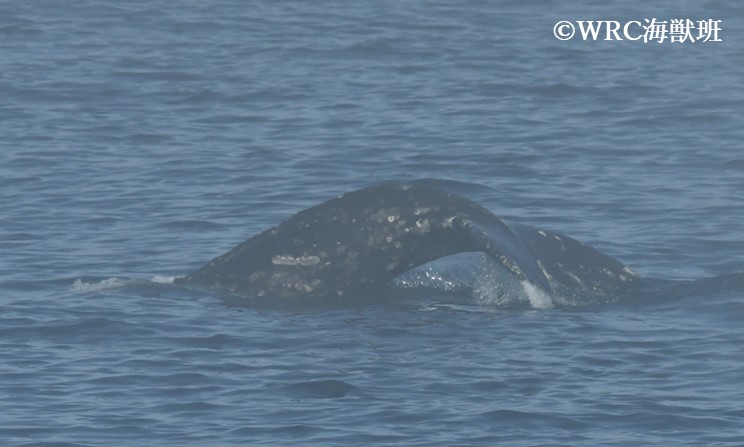
Fig5. A gray whale was diving into the waters.
As a pinniped lover, I was delighted to sight seals in circumpolar waters. I remember a spotted seal diving beside our vessel in the early morning. Another day, I saw a seal resting on the drifting wood and noticed another one popped up its head beside the wood while checking the photos.
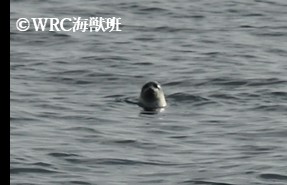
Fig6. A spotted seal popped up from the water.
We had a fruitful sighting survey of marine mammals in the Arctic Ocean. On the way back, we continued to search for marine mammals and had a joyful time meeting striped dolphins and common dolphins in the waters of Japan.
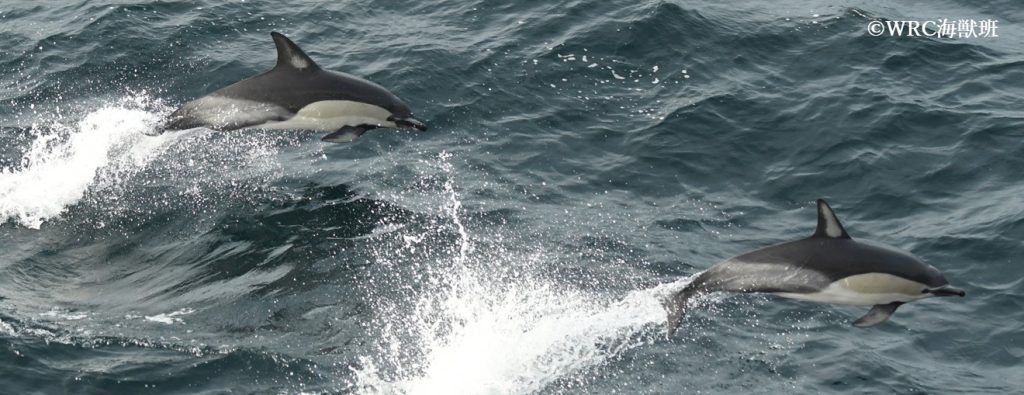
Fig7. Photo of common dolphins.
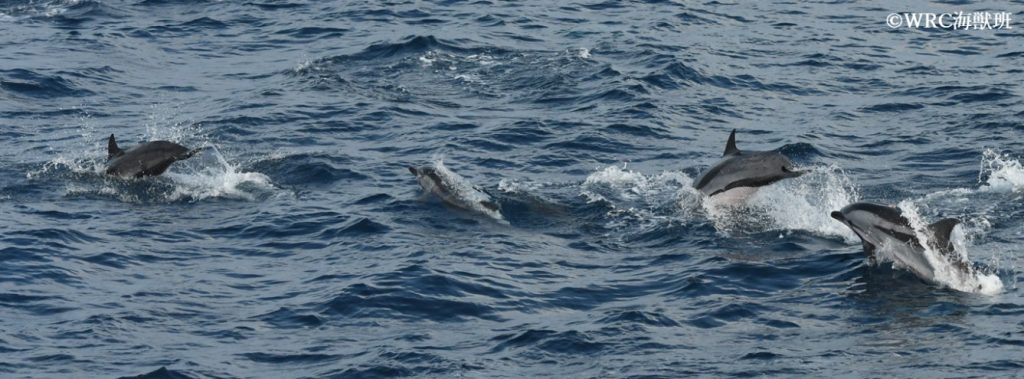
Fig8. A group of striped dolphins.
The 55-day onboard survey ended with a lot of good memories. Sighting records of marine mammal species contribute to comprehensively depicting the distribution of different animals. Previous study suggested the ongoing warming in the Arctic region might challenge the adaptive capability of arctic marine mammal species. In a combination of various oceanographic data collected during the cruise, we expected to fully understand the polar ecosystem and determine the impacts of environmental changes on different marine mammal species.
~~~~~~Afterword~~~~~~
- Photo of seabirds and scenery at the sea
The bird sighting survey team worked with us at the upper bridge during the voyage. We learnt from each other and down below are some photos of seabirds!

Fig9. Photo of horned puffin.

Fig10. Photo of Parakeet Auklet.

Fig11. Photo of tufted puffin.
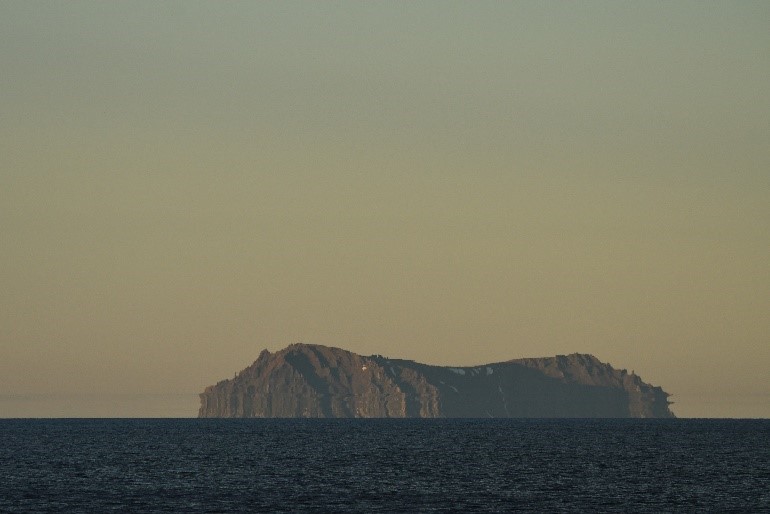
Fig12. King island in the early morning.
- Life on the Oshoro-Maru for the research crew
For sighting survey team, we started the observation one hour after the sunrise and stopped one hour before the sunset time. We could take a rest when the vessel arrived at the station to conduct in-situ observations. Three meals are served each day at appointed times, 7:30 for breakfast, 11:30 for lunch and 17:00 for dinner.

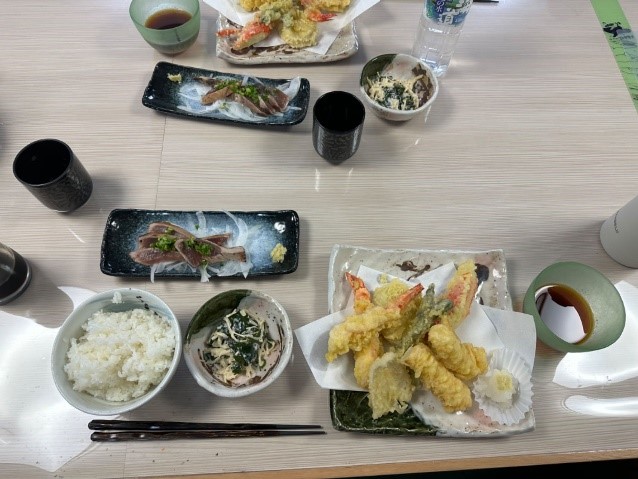
This survey is supported by the ArCS II project.
Special thanks to the research teams from Hokkaido University, the University of Alaska Fairbank, and the crews of Oshoro-Maru!
Reference
Sekiguchi, K., Jefferson, T. A., Iwahara, Y., Yoshioka, M., Mori, K., Ford, J. K., … & Gorter, U. (2014). An infrequently-occurring anomalous color pattern on Pacific white-sided dolphins, Lagenorhynchus obliquidens. Dolphins: Ecology, behavior, and conservation strategies, 183-200.
Moore, S. E., & Huntington, H. P. (2008). Arctic marine mammals and climate change: impacts and resilience. Ecological Applications, 18(sp2), S157-S165.
Link
ArCII プロジェクト報告・成果
https://www.nipr.ac.jp/arcs2/project-report/2023-oshoro/#oshoro
LASBOS Moodle 2023年度 おしょろ丸 北極航海
https://repun-app.fish.hokudai.ac.jp/course/view.php?id=1300#section-1

